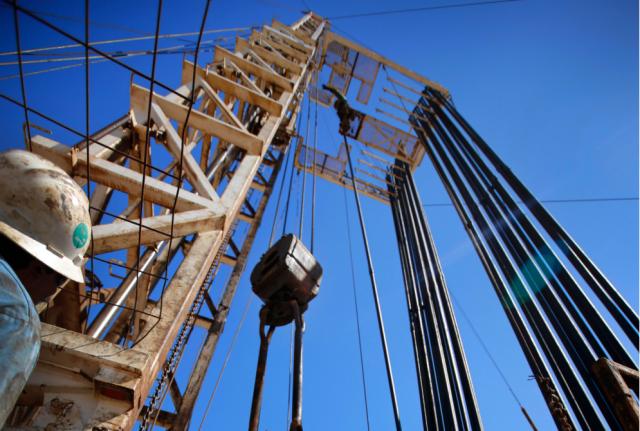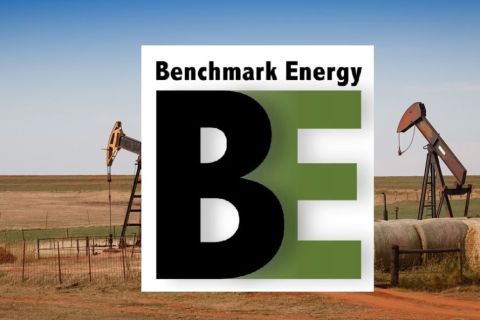
“They have had their fair share of adventure and now they are listening to the call of their shareholders,” Salman added noting U.S. shale companies’ focus on shareholder returns. (Source: Hart Energy)
In an unexpected move, OPEC and Russia decided to keep a tight grip on supply at their OPEC+ meeting on March 4 as Saudi Arabia urged fellow oil producers to exercise caution.
“‘Drill, baby, drill’ is gone forever,” Saudi Energy Minister Prince Abdulaziz bin Salman told a post-meeting news conference, taking aim at U.S. shale producers.
“I think all producers have learned that tough lesson—how to discipline themselves in a way that they can ensure that the well-being of the company and the well-being of the shareholders is maintained.”
Still, Salman wished the U.S. shale industry well in another interview with Bloomberg.
“We’ve never had any issue with shale oil,” he said. “It’s the shale companies which are themselves changing.”
“They have had their fair share of adventure and now they are listening to the call of their shareholders,” he added noting U.S. shale companies’ focus on shareholder returns.
At their meeting on March 4, OPEC and its allies, known as OPEC+, agreed to extend oil cuts by one month into April, offering small exemptions to Russia and Kazakhstan. At the onset of the OPEC+ meeting, Salman noted that oil markets have improved since January, but urged nations to be cautious and vigilant.
“Let us be certain that the glimmer we see ahead is not the headlight of an oncoming express train,” he said as the meeting of oil ministers began. “The right course of action now is to keep our powder dry, and to have contingencies in reserve to ensure against any unforeseen outcomes.”
RELATED:
CERAWeek: OPEC Oil Has Advantage over US Shale during Pandemic Recovery
After a catastrophic market collapse in 2020 saw oil prices plunge to lowest level in decades, historic supply cuts of about 10 MMbbl/d were agreed by the OPEC+ group last April. The cuts, which gradually eased to 7 MMbbl/d, have kept oil prices in check and markets rebalanced during the past few months.
Even though Saudi Arabia has managed to push oil prices higher through further voluntary supply cuts, an increase in U.S. shale production could flood the market, according to analysts, resulting in lower prices and oversupply.
“If prices remain where they are, we will see significantly more bullishness among U.S. operators, which will drive more aggressive drilling,” Ian Simm, principal adviser at IGM Energy Ltd., told Hart Energy.
Simm added that even though the Saudi oil minister has taken steps to repair the market, industry experts fear the “taps could be turned to reign in overproduction elsewhere.”
Taking charge
“The Kingdom sees itself responsible for taking care of the oil market and the latest OPEC+ agreement clearly shows who is in charge,” Simm said.
On March 4, OPEC’s leader Saudi Arabia said it would extend its voluntary oil output cut of 1 MMbbl/d, and would decide in coming months when to gradually phase it out.
“[Saudi Arabia] has more than made up for the mess it caused when it took part in an oil price war with Russia last year,” Simm said, “pushing for greater cuts, encouraging compliance and almost single-handedly bringing a price boom that has come to the rescue of its fellow OPEC members’ finances.”
He also pointed out that stable oil prices and demand growth are substantial for the oil-dependent Saudi economy.
“It is important to remember that market volatility does little to help Riyadh, which despite efforts to diversify its economy, remains highly reliant on Saudi Aramco’s oil revenues,” he said. “With oil the country’s key resource and more than 200 billion barrels still to produce, Saudi interests are best served through stable prices and growing demand.”
Oil above $70
While vaccine rollout has contributed to oil prices jumping over $60/bbl, some analysts suggest that continued supply cuts by OPEC+ will send prices soaring higher.
“Under the current production scenarios, I would expect prices to rally above $70 in March supported by increasing rate of vaccination around the world and the increasing likelihood of returning to part of pre-crisis normality,” said Yousef M. Alshammari, CEO and head of oil research at CMarkits.
“I think the approach that the group has opted for is quite surprising to the markets especially when we saw Brent and WTI trading well above $60, almost back to their pre-crisis levels,” Alshammari continued. “Yet, the rationale behind this decision seems to be continuing concerns about global recovery. It looks like the groups do not want prices to return back to $50s, and $60-$70 would be the ideal price range that the group would be comfortable with under the current production levels.”
Additionally, he noted that almost 5 MMbbl/d of the OPEC pre-pandemic production is off the markets, and to compensate for the loss of these barrels, the group may need Brent to be higher than $65/bbl.
Next for OPEC+?
Nobody really knows the answer to this question what’s next for OPEC and allies, which includes Russia.
“Well, it is very hard to predict OPEC’s next move in April and beyond,” Alshammari said.
“Now we have two vectors, the OPEC+ cuts and, equally important, the Saudi voluntary cuts,” he said. “I would expect suppliers to be willing to increase production as prices continue to grow, which is an economic principle. But when OPEC suppliers will be convinced to do that remains highly uncertain.”
According to Alshammari, current price levels are not sufficient to drive OPEC+ decisions. He expects the group to ease cuts to meet demand growth somewhere in the second quarter of 2021, with restoration of aviation activity as economy reopens and, most importantly, an increase in the rollout of vaccines around the world.
“If there is one thing we should have learnt about the oil industry, it is to expect the unexpected,” Simm added. “At this rate, we are unlikely to see OPEC+ abandon its current cautiousness at the end of April. The approach has worked up to this point and this will continue in some form as cuts are eased.”
Recommended Reading
EIA: Permian, Bakken Associated Gas Growth Pressures NatGas Producers
2024-04-18 - Near-record associated gas volumes from U.S. oil basins continue to put pressure on dry gas producers, which are curtailing output and cutting rigs.
Benchmark Closes Anadarko Deal, Hunts for More M&A
2024-04-17 - Benchmark Energy II closed a $145 million acquisition of western Anadarko Basin assets—and the company is hunting for more low-decline, mature assets to acquire.
‘Monster’ Gas: Aethon’s 16,000-foot Dive in Haynesville West
2024-04-09 - Aethon Energy’s COO described challenges in the far western Haynesville stepout, while other operators opened their books on the latest in the legacy Haynesville at Hart Energy’s DUG GAS+ Conference and Expo in Shreveport, Louisiana.
Mighty Midland Still Beckons Dealmakers
2024-04-05 - The Midland Basin is the center of U.S. oil drilling activity. But only those with the biggest balance sheets can afford to buy in the basin's core, following a historic consolidation trend.
Mesa III Reloads in Haynesville with Mineral, Royalty Acquisition
2024-04-03 - After Mesa II sold its Haynesville Shale portfolio to Franco-Nevada for $125 million late last year, Mesa Royalties III is jumping back into Louisiana and East Texas, as well as the Permian Basin.





